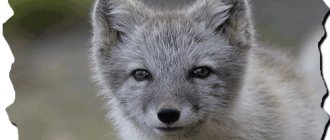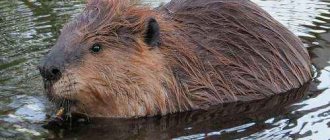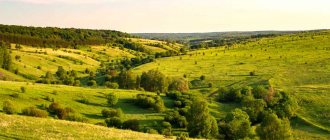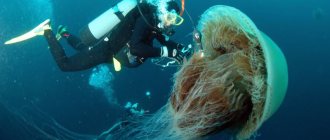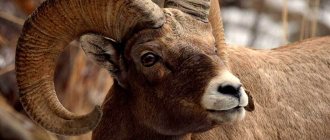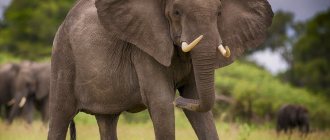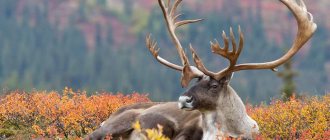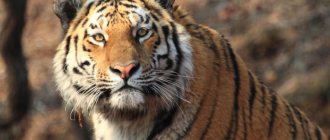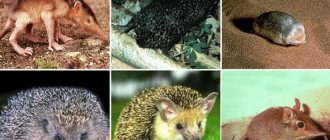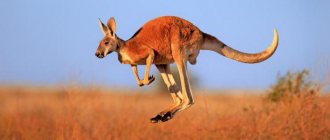4.5
Average rating: 4.5
Total ratings received: 51.
4.5
Average rating: 4.5
Total ratings received: 51.
The tundra occupies the northern territories of Eurasia and North America. Migratory birds nest here, wild and domestic reindeer graze here. Animals that live in the taiga (foxes, wolves) come here. The inhabitants of the tundra - arctic foxes, musk oxen, polar owls - do not leave the harsh lands even in winter. The taiga inhabitants go “home” for the winter. Reindeer migrate across the tundra in search of food.
What animals live in the tundra
The list of those who live in the tundra includes mammals, birds, and insects.
- Large animals - musk oxen, reindeer. Small ones include Arctic foxes, white hares, and lemmings. Polar wolves are found in the Canadian archipelago.
- Migratory birds nest in the tundra - swans, geese, ducks, loons, waders, pink gulls and white cranes. Polar owls do not leave the tundra.
- Many blood-sucking insects - mosquitoes, horseflies, gadflies, midges.
There are no reptiles in the tundra. Permafrost and cold climate limit their distribution.
Reptiles and amphibians
The tundra is not the most suitable habitat for such heat-loving creatures. It is not surprising that there are almost no reptiles there. The exception is three species of reptiles that have managed to adapt to the cold climate. There are only two species of amphibians in the tundra: the Siberian salamander and the common toad.
Brittle spindle
Belongs to the class of pseudo-legged lizards. Its length reaches 50 cm. The color is brownish, grayish or bronze; males have light and dark horizontal stripes on their sides; females are more uniformly colored. In spring, this lizard is active during the daytime, and in summer it is nocturnal. Hides in holes, rotten stumps, piles of branches. The spindle has no legs, therefore, out of ignorance, people often confuse it with a snake.
Viviparous lizard
These reptiles are less susceptible to cold than other lizard species, and therefore their range extends in the north to the Arctic latitudes. They are also found in the tundra. Viviparous lizards are colored brown and have dark stripes on their sides. The belly of males is reddish-orange, while that of females has a greenish or yellow tint.
These reptiles feed on invertebrates, mainly insects. However, they do not know how to chew prey, and therefore their prey consists of small invertebrates.
A peculiarity of these lizards is the birth of live young, which is uncharacteristic of most reptiles that lay eggs.
Common viper
This venomous snake, which prefers colder climates, does well in the tundra. True, she has to spend most of the year hibernating, hiding somewhere in a hole or crevice. In summer he likes to crawl out to bask in the sun. It feeds on rodents, amphibians and lizards, and on occasion can destroy bird nests built on the ground.
It has a grayish, brownish or reddish base color. The viper has a distinct zigzag dark pattern on its back.
The viper is not aggressive towards a person and, if he does not touch it, will calmly crawl past on its own business.
Siberian salamander
This newt is the only amphibian that has managed to adapt to permafrost conditions. However, it appears infrequently in the tundra, since its lifestyle is associated with taiga forests. It feeds mainly on insects and other invertebrates.
Glycerol, produced by their liver before hibernation, helps newts of this species survive in the cold.
In total, the amount of glycerol in relation to body weight in salamanders at this time of year reaches approximately 40%.
Common toad
A fairly large amphibian, covered with warty skin of brownish, olive, terracotta or sandy tones. In the taiga it feeds mainly on insects. It overwinters in burrows dug by small rodents, or less often under stones. When attacked by predators, it tends to rise on its paws and take a threatening pose.
Return to content
Arctic fox or arctic fox
It has thick fur, brown in summer, white in winter. Lives in burrows, which it uses for many years. It feeds on bird eggs and chicks, lemmings, fish, picks up carrion, and feasts on berries (blueberries, cloudberries).
The number of Arctic foxes depends on the number of lemmings. In hungry years, they migrate to the southern regions of the tundra.
Rice. 1. Arctic fox.
Basic soils
The permafrost terrain, which includes the swamp soils of the forest-tundra, is divided into lowland and highland. Among the latter, peat-gley and peat-gley soils, formed on small hilly terrain, predominate. In addition, areas with peat bog soils are quite common. They, in turn, form on flat-bummed peat bogs, the active thickness of which can consist of a series of horizons that differ from each other only in the degree of decomposition.
Sometimes this type of forest-tundra soil is underlain by a mineral layer that has a light mechanical composition. This circumstance contributes to the most intense outflow of moisture, and this creates the most favorable conditions for the relatively rapid decomposition of peat. Permafrost high soils are characterized by superficial cracking of peaty horizons followed by their drying out, which is why they are deprived of an integral plant cover.
Muskox
The musk ox has long, thick hair and a dense, downy undercoat that protects from frost. The weight of the animal is from 250 to 650 kg, the height at the withers is 1.2–1.5 m. Calves are born at the end of April, when frosts reach -30 ° C, so newborns have dense wool and an impressive layer of subcutaneous fat. In summer they feed on herbaceous plants, in winter they dig them out from under the snow.
Musk oxen disappeared from the Russian North 200–400 years ago. At the end of the 20th - beginning of the 21st centuries they were again resettled in Taimyr, the Polar Urals, Yamal, and Wrangel Island.
Rice. 2. Musk oxen on Wrangel Island.
Fishes of the Arctic
For the coldest regions of our planet, not only many species of birds are endemic, but also various marine inhabitants. Arctic waters are home to walruses and seals, several species of cetaceans, including baleen whales, narwhals, killer whales and beluga whales, as well as several species of fish. In total, the territory of ice and snow is inhabited by just over four hundred species of fish.
Arctic char
Ray-finned fish (Salvelinus alpinus) belong to the salmon family, and are represented by many forms: anadromous, lake-river and lake loaches. Migratory loaches are distinguished by their large size and silvery color, have a dark blue back and sides, covered with light and rather large spots. Widespread lake Arctic char are typical predators that spawn and feed in lakes. Lake-river forms are characterized by a smaller body. Currently, the Arctic char population is in decline.
Arctic sharks
Somniosa sharks (Somniosidae) belong to the family of sharks and the order Katraniformes, which includes seven genera and about two dozen species. The natural habitat is Arctic and sub-Antarctic waters in any oceans. Such sharks inhabit continental and island slopes, as well as shelves and open ocean waters. Moreover, the maximum recorded body dimensions do not exceed 6.4 meters. The spines located at the base of the dorsal fin are usually absent, and the edge of the upper lobe of the caudal fin is characterized by a notch.
Arctic cod or polar cod
Arctic cold-water and cryopelagic fish (Boreogadus saida) belongs to the cod family (Gadidae) and the order Gadiformes. Today it is the only species from the monotypic genus of Arctic cods (Boreogadus). The body of an adult individual has a maximum body length of up to 40 cm, with significant thinning towards the tail. The caudal fin is characterized by the presence of a deep notch. The head is large, with a slightly protruding lower jaw, large eyes and a small antennae at chin level. The top of the head and back are grayish-brown in color, while the belly and sides are silvery-gray.
Eel-pout
Sea fish (Zoarces viviparus) belongs to the eelpout family and the order Perciformes. The aquatic predator has a maximum body length of 50-52 cm, but usually the size of an adult does not exceed 28-30 cm. The eelpout is distinguished by a rather long dorsal fin with short spine-like rays at the back. The anal and dorsal fins are fused together with a caudal fin.
Pacific herring
Ray-finned fish (Clupea pallasii) belongs to the herring family (Clupeidae) and is a valuable commercial object. Representatives of the species are distinguished by a rather weak development of the ventral keel, very clearly visible exclusively between the anal and ventral fin. Typically pelagic schooling fish are characterized by high motor activity and constant collective migrations from wintering and feeding areas to spawning areas.
Haddock
The ray-finned fish (Melanogrammus aeglefinus) belongs to the cod family (Gadidae) and the monotypic genus Melanogrammus. The body length of an adult varies between 100-110 cm, but typical sizes are up to 50-75 cm, with an average weight of 2-3 kg. The body of the fish is relatively high and slightly flattened on the sides. The back is dark gray with a purple or lilac tint. The sides are noticeably lighter, with a silvery tint, and the belly is silvery or milky white. The haddock has a black lateral line on its body, below which there is a large black or blackish spot.
Best articles: TOP 10 Mothers in the animal world
Nelma
The fish (Stenodus leucichthys nelma) belongs to the salmon family and is a subspecies of the whitefish. Freshwater or semi-anadromous fish from the order Salmonidae reaches a length of 120-130 cm, with a maximum body weight of 48-50 kg. A very valuable species of commercial fish is a popular breeding object today. Nelma differs from other members of the family in the structural features of its mouth, which gives this fish a rather predatory appearance compared to related species.
Arctic omul
Commercially valuable fish (lat. Coregonus autumnalis) belongs to the genus whitefish and the salmon family. The migratory type of northern fish feeds in the coastal waters of the Arctic Ocean. The average body length of an adult reaches 62-64 cm, with a weight in the range of 2.8-3.0 kg, but larger individuals are found. A widespread aquatic predator preys on a wide variety of large representatives of benthic crustaceans, and also eats juvenile fish and small zooplankton.
polar owl
A large bird with white plumage in winter, with motley speckles in summer. The wingspan is 1.4–1.7 m. It feeds on lemmings, birds, and fish. The polar owl does not hunt near the nest; it successfully repels the attacks of arctic foxes and skuas of prey. Ducks, geese, and waders take advantage of this by making nests in the owl’s territory.
Rice. 3. Polar owl.
The influence of soil on the species diversity of vegetation
In the tundra and forest-tundra zones, high temperatures are observed. It is especially noticeable during the period of snow melting. Water cannot penetrate deep due to the presence of permafrost. Its evaporation is also not very intense due to the low air temperature. For these reasons, meltwater and precipitation accumulate on the surface, forming large and small swamps.
High swampiness, the presence of permafrost, and the predominance of low temperatures make it difficult for chemical and biological processes to occur in the soil. It contains little humus and ferric oxide accumulates. Tundra-gley soils are suitable for the growth of only certain plant species. But tundra vegetation adapts to such living conditions. A person who has visited these parts during the flowering period of plants will have indelible impressions for many years - the blooming tundra is so beautiful and attractive!
In the forest-tundra, the natural fertile layer of the earth is also thin. The soil is poor in nutrients and is characterized by high acidity. When cultivating land, large amounts of mineral and organic fertilizers are added to the soil composition. In the treated areas of the forest-tundra, there is a more diverse variety of herbaceous vegetation, trees and shrubs.
Reproduction
At the beginning of spring, females begin to estrus. During this period, males often fight, asserting their right to a family. The gestation period ranges from 49 to 57 days. Females are quite fertile: each litter consists of 7-12, and sometimes more babies. The male participates in caring for the offspring along with the female. But even in nursing years, despite the care of their parents, not all puppies survive.
The adult arctic fox has white fur, but is born with a smoky brown coloration. The fur of blue fox cubs is almost brown. Babies in a hole open their eyes only on days 10-18, and after 6 months they already reach the size of their parents. The puppies emerge from the hole for the first time at 3-4 weeks. The female can feed her cubs with milk for 8-10 weeks. Starting next year, the young are capable of reproduction, but full maturation usually occurs by two years.
Appearance
The Arctic fox animal is relatively small in size. It is very similar to a fox, but has a stockier body, a shorter muzzle and wider, rounded ears. The body of the Arctic fox is elongated, its length is from 50 to 80 cm. The tail of the animal is fluffy, its length is about 30 cm. Measurements at the withers do not always reach 30 cm.
On average, males weigh about 4 kg. The maximum weight that was recorded was 9 kg. Females are slightly lighter: their average weight varies between 3 kg.
The Arctic fox differs from foxes and other canids in its pronounced seasonal color dimorphism. This means that one species, depending on the season, has a different color. There are two subspecies of these animals based on color:
- White Arctic fox. In summer, the fur of the animal is dirty brown; by winter it becomes denser and pure white.
- Blue Arctic fox. In summer, the fur is grayish-brown, and by winter it acquires a smoky-gray color with a bluish tint or becomes similar in color to coffee with milk.
Seasonal color changes provide ideal camouflage during hunting. Actually, “blue” arctic fox is not exactly a designation for fur color. This suggests that the animal is rare, and meeting it in the wild is a great success.
Evergreen subtropical forests
They occupy the Mediterranean region. Summers here are hot and winters are warm and humid. Such weather conditions are favorable for the growth of evergreen trees and shrubs: pine, bay tree, holm and cork oak, magnolia, cypress, and various vines. In places where agriculture is well developed, there are many vineyards, wheat and olive plantations.
The animals and plants of Eurasia characteristic of this natural zone are significantly different from those that lived here before. It's all man's fault. Now wolves, tigers, gophers, marmots, and horned goats live here.
